
Royal Air Force Station Harrington or more simply RAF Harrington is a former Royal Air Force station in England about 5.6 miles (9.0 km) west of Kettering in Northamptonshire south of the village of Harrington off the A14 road. During the early Cold War, it was a Thor missile site, designed to deliver atomic warheads to the Soviet Union. The nuclear missile site is now protected as a Grade II listed building as an example of Cold War architecture.

The 487th Air Expeditionary Wing is a provisional United States Air Force unit assigned to the United States Air Forces in Europe. As a provisional unit, it may be activated or inactivated at any time. The unit's last known assignment was in 2003 at Cairo West Air Base, Egypt, during Operation Iraqi Freedom.

The 490th Bombardment Group is a former United States Army Air Forces unit. The group was activated in October 1943. After training in the United States, it deployed to the European Theater of Operations and participated in the strategic bombing campaign against Germany from 31 May 1944 to 20 April 1945, losing 22 aircraft while flying more than 5,000 sorties. Following V-E Day, the group returned to the United States, where it was inactivated in November 1945.
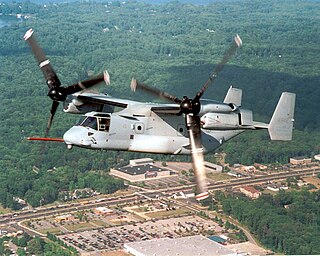
The 18th Special Operations Test and Evaluation Squadron is an active unit of the United States Air Force, based at Hurlburt Field, Florida. The squadron performs field testing for Air Force Special Operations Command, evaluating aircraft, equipment, and tactics in realistic battlespace environments to provide decision-makers with accurate, timely, and complete assessments of mission capability. From concept development to system fielding, the unit's mission improves the survivability and combat capability of special operations forces worldwide.
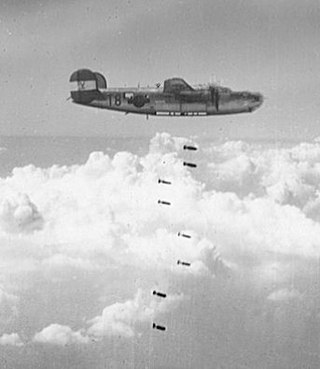
The 491st Bombardment Group is a former United States Army Air Forces unit. It was activated in October 1943 as a heavy bomber unit, drawing its cadre from the former 17th Antisubmarine Squadron. After training in the United States, the group deployed to the European Theater of Operations, where it participated in the strategic bombing campaign against Germany, earning a Distinguished Unit Citation in an attack against Misburg. The group flew 187 combat missions. Following V-E Day, the group returned to the United States and was inactivated at McChord Field, Washington in September 1945.

The 25th Attack Group is an active United States Air Force unit, stationed at Shaw Air Force Base, South Carolina. It was activated in February 2018 as a Geographically Separate Unit to operate unmanned aerial vehicles and is assigned to the 432d Wing, which is located at Creech Air Force Base, Nevada. As of 2020, the group manages five MQ-9 Reaper attack squadrons, as well as the 25th Operations Support Squadron, which provides intelligence, weather, and administrative support.

The 906th Air Refueling Squadron is an active United States Air Force unit. It is an active associate squadron and part of the 375th Air Mobility Wing at Scott Air Force Base, Illinois.
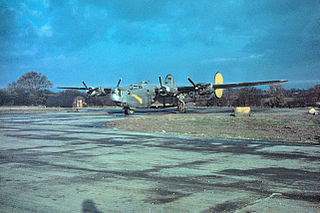
The 847th Bombardment Squadron is a former United States Army Air Forces unit that was originally activated as the 421st Bombardment Squadron. Its last assignment was with the 489th Bombardment Group at Great Bend Army Air Field, Kansas where it was inactivated on 28 March 1945. As the 20th Antisubmarine Squadron, the squadron performed antisubmarine patrols in 1942 and 1943. After reforming as a heavy bomber squadron, it engaged in the strategic bombing campaign against Germany in the European Theater of Operations until returning to the United States in late 1944. The squadron was inactivated while its parent group was training as a very heavy bombardment unit.
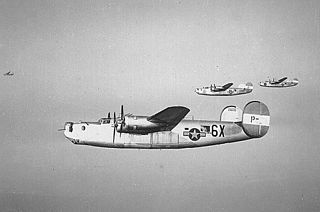
The 855th Bombardment Squadron is an inactive United States Air Force unit. The squadron was first activated as the 522d Bombardment Squadron at Lantana Airport, Florida, in October 1942, when it assumed the personnel and equipment of a National Guard unit engaged in antisubmarine warfare over the Atlantic. The squadron continued antisubmarine patrols as the 17th Antisubmarine Squadron until the summer of 1943, when its mission was transferred to the Navy.

The 831st Bombardment Squadron was a squadron of the United States Army Air Forces. It was activated in 1942 as the 516th Bombardment Squadron and flew antisubmarine missions off the Atlantic coast as the 11th Antisubmarine Squadron. Later, it saw combat in the Mediterranean Theater of Operations as a Consolidated B-24 Liberator unit, where it earned a Distinguished Unit Citation during the strategic bombing campaign against Germany. Following V-E Day, the squadron returned to the United States and was inactivated at Sioux City Army Air Base, Iowa on 20 August 1945.

The 835th Bombardment Squadron is an inactive United States Army Air Forces unit. It was activated in January 1941 as the 80th Bombardment Squadron and equipped with Douglas A-20 Havoc light bombers. Following the attack on Pearl Harbor the squadron began to fly antisubmarine patrols off the Atlantic coast and over the Caribbean Sea, becoming the 9th Antisubmarine Squadron.

The 863rd Bombardment Squadron is a former United States Army Air Forces unit. It was first organized as the 518th Bombardment Squadron in October 1942, when it replaced a National Guard unit participating in antisubmarine patrols off the Atlantic coast, becoming the 13th Antisubmarine Squadron in November. When the Navy took over the coastal antisubmarine mission in August 1943, the squadron moved to the western United States, where it formed the cadre for the 493rd Bombardment Group and was redesignated as the 863rd. It moved to England in the spring of 1944 and participated in the strategic bombing campaign against Germany until April 1945. It returned to the United States and was inactivated in August 1945.
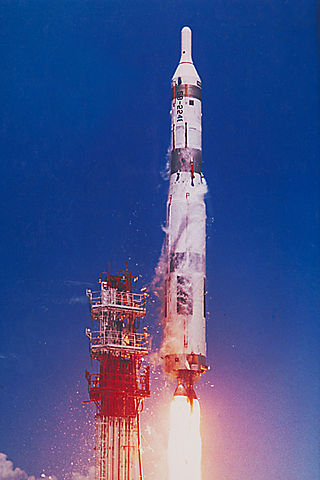
The 851st Strategic Missile Squadron is an inactive United States Air Force unit. It was last assigned to the 456th Strategic Aerospace Wing, stationed at Beale Air Force Base, California. It was equipped with the HGM-25A Titan I intercontinental ballistic missile, with a mission of nuclear deterrence. It was the last Titan I squadron to achieve alert status on 1 February 1961. The squadron was inactivated as part of the phaseout of the Titan I on 25 March 1965.

The 492nd Special Operations Wing is a United States Air Forces unit stationed at Hurlburt Field, Florida. It was activated in May 2017 to replace the Air Force Special Operations Air Warfare Center.

The 856th Bombardment Squadron was a United States Army Air Forces unit. it was first activated in October 1943 as one of the original Consolidated B-24 Liberator squadrons of the 492d Bombardment Group. After deploying to England, the 492d entered the strategic bombing campaign against Germany, but in three months of combat, the 492d Group suffered the most severe losses of an Eighth Air Force bomber group. The 492d Group was withdrawn from combat in August 1944, and the 856th moved on paper to replace the 36th Bombardment Squadron, which was engaged in Operation Carpetbagger, dropping agents and supplies behind German lines, primarily in France. As American forces advanced in France, this special operations mission diminished. The squadron briefly transported fuel to mechanized units in France, then returned to special operations in Scandinavia and Germany under the operational control of Eighth Air Force until the end of hostilities in Europe. It returned to the United States for conversion to Boeing B-29 Superfortresses, but was inactivated in October 1945.

The 857th Bombardment Squadron is one of the two predecessors of the 557th Tactical Air Support Squadron, an inactive United States Air Force unit, formed in 1985 by the consolidation of the 857th with another inactive bombardment squadron. It has never been active under its most recent designation.

The 788th Tactical Fighter Squadron is an inactive United States Air Force unit. During World War II, as the 788th Bombardment Squadron, it was assigned to the 467th Bombardment Group as a Consolidated B-24 Liberator squadron in 1943. After training in the United States, it moved to the European Theater of Operations the following year. It saw combat until the surrender of Germany in May 1945, earning a French Croix de Guerre with Palm for its actions contributing to the liberation of France. From May to August 1944, the squadron was detached to the 801st Bombardment Group (Provisional) engaging in Operation Carpetbagger operations. After V-E Day, the squadron returned to the United States and transitioned into the Boeing B-29 Superfortress It was inactivated on 4 August 1946 at Clovis Army Air Field, New Mexico.
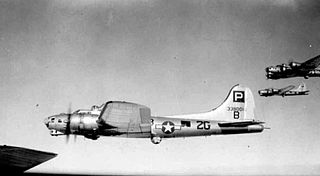
The 836th Bombardment Squadron was a United States Army Air Forces unit. It was activated in September 1943. After training in the United States, it deployed to the European Theater of Operations, where it engaged in combat in the strategic bombing campaign against Germany with Consolidated B-24 Liberators. In the summer of 1944, it was withdrawn from combat to convert to the Boeing B-17 Flying Fortress, then continued in combat with the 487th Bombardment Group until the spring of 1945. Following V-E Day, the squadron returned to Drew Field, Florida, where it was inactivated on 7 November 1945.

The 839th Bombardment Squadron is an inactive United States Army Air Forces unit. It was activated in January 1941 as the 79th Bombardment Squadron and equipped with Douglas A-20 Havoc light bombers. Following the attack on Pearl Harbor the squadron began to fly antisubmarine patrols off the Atlantic coast and over the Caribbean Sea, becoming the 8th Antisubmarine Squadron.

The 968th Expeditionary Airborne Air Control Squadron is a provisional unit of the United States Air Force, flying the Boeing E-3G Sentry. Since March 2022, the squadron is stationed at Prince Sultan Air Base, Saudi Arabia. It has been activated twice during the Global War on Terror.




























